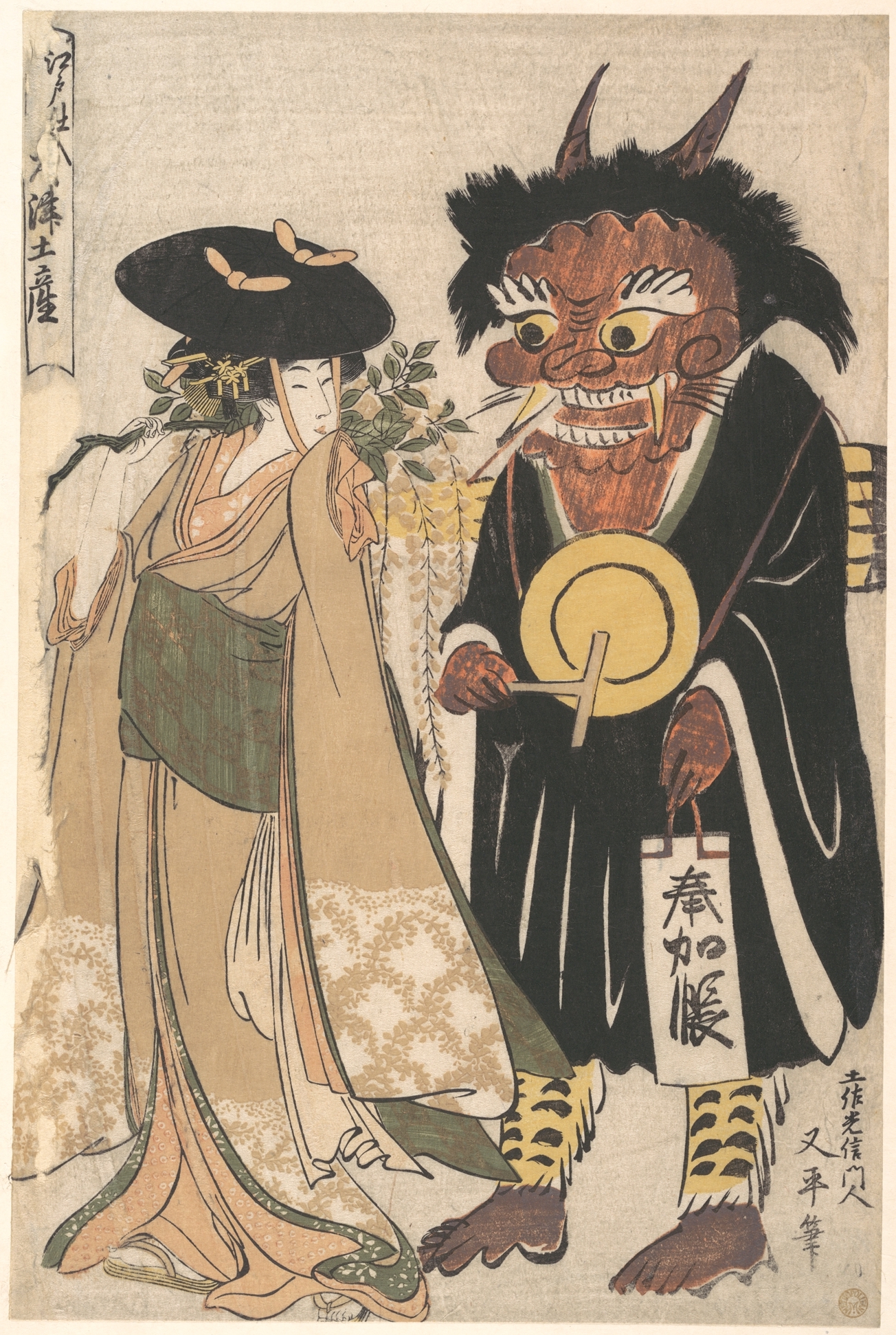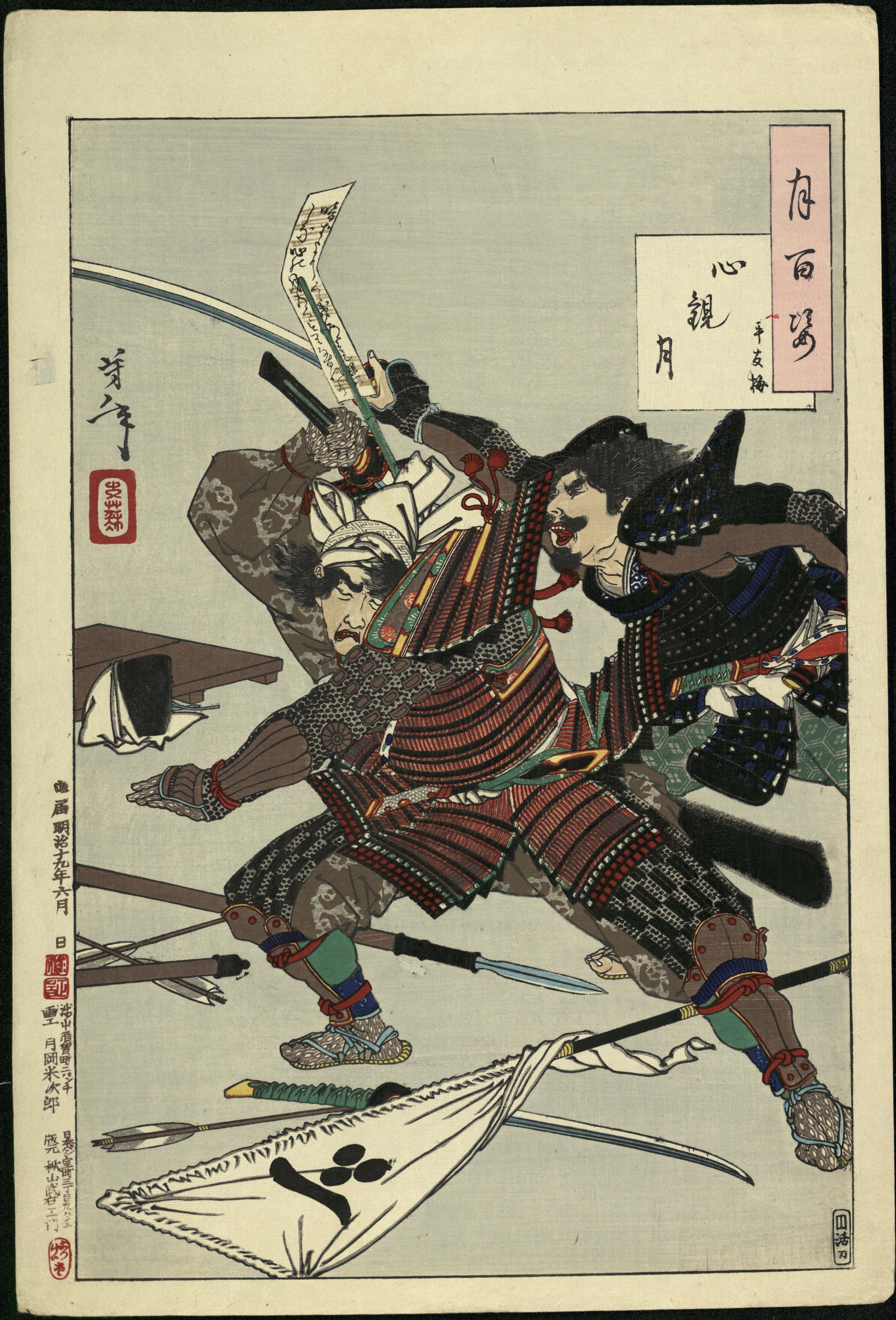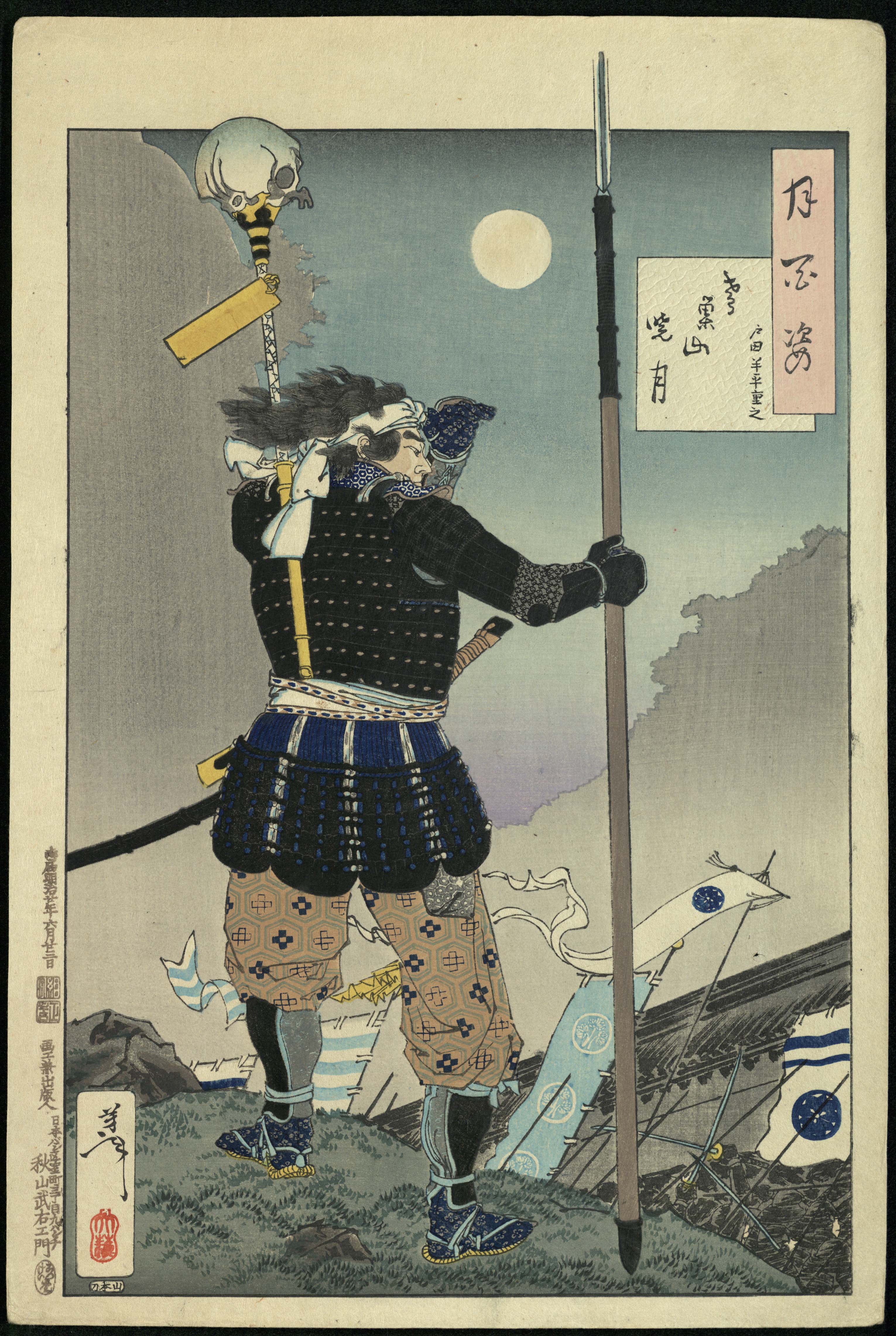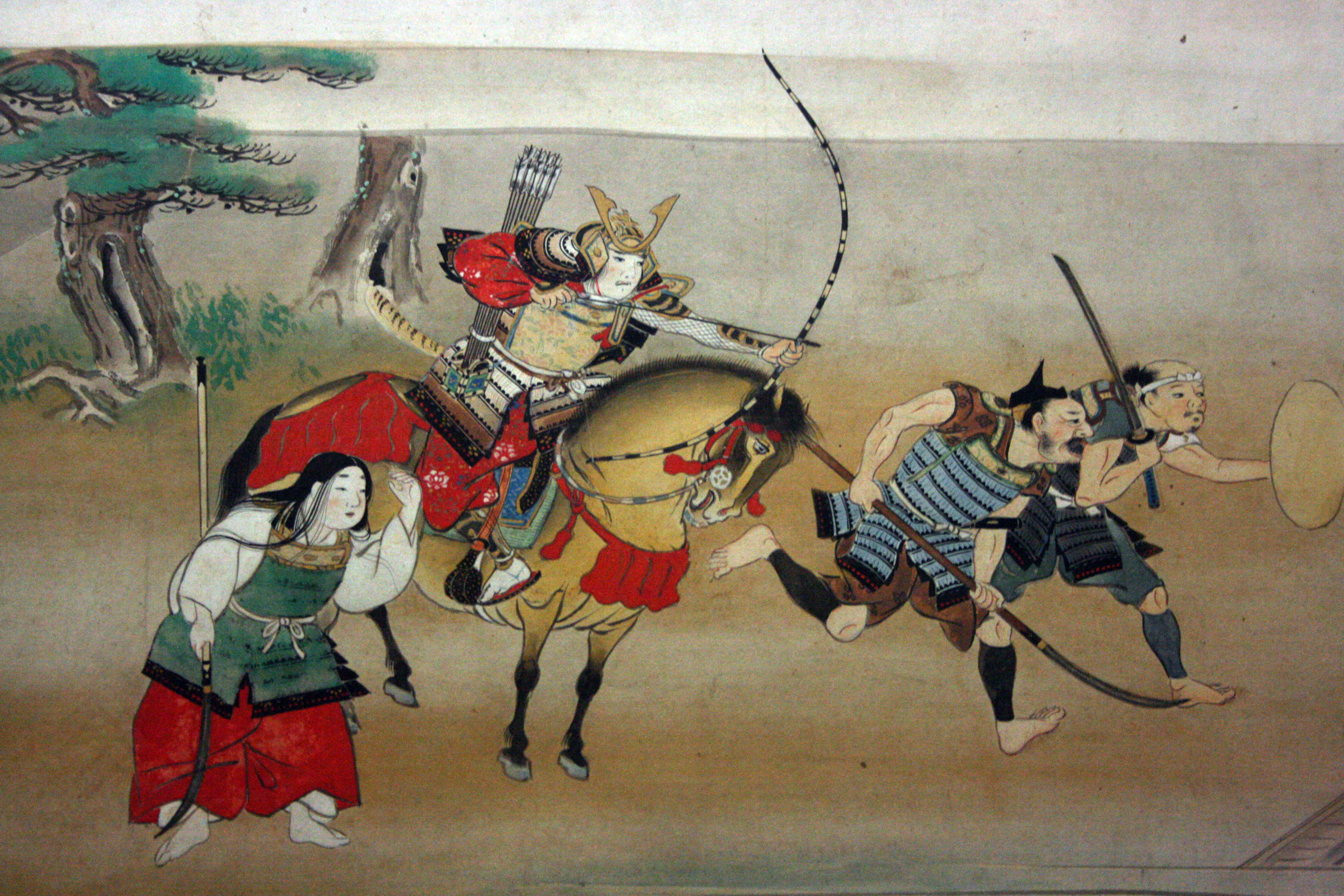Ninja researcher and historian Antony Cummins, author of new book The Dark Side of Japan, explains how spells and superstitions accompanied the samurai in battle
Japanese folktales usually feature the samurai as the foil or target of the supernatural, does that tell us anything about how the Samurai were perceived or perceived themselves? Were they seen as fighting a spiritual war as much as a physical one?
The samurai was a hero figure even in their own time and as King Arthur was a hero to the warrior of the Middle Ages, supernatural knights such as Yoshitsune and ancient Chinese figures were the heroes of the Samurai. It is the classic story of good-knight facing a dark force and overcoming that force in the name of good deeds (an ideal not a reality for the samurai and the knight). They enjoyed tales of the super-strong and of the warrior beyond human capabilities. The samurai did perceive themselves as just, as holy and as working for the side of truth.
The problem with this is that they actually only really fought other samurai or quelled rebellions against their rule, so logically is does not add up, but many had a true belief in their right to rule in the name of the Emperor. However, we cannot say they were in an overall war against a malignant force such as Satan, who had a unified intent to warp mankind, nothing such as that.
The samurai faced independent lesser evil gods who had taken up in an area and caused strife such as a dragon-king in the sea, demanding female sacrifices, also, old demons with armies of spiders in caves; so it was not a war against a supernatural force as more a hero stumbling upon a quest to fulfil. These were the fireside stories of old Japan, used to capture the imagination of warriors and to inspire courage just as Hector, Beowulf and Arthur and even Frodo do in our own culture.
It is clear from historical scrolls that some samurai did indeed believe in such creatures and to them, such evil was a reality, but yet there are other scrolls which say that samurai should ignore such trivial fantasies and should place them in the realm of “women, children and temple maidens” and that warriors should not take heed of such superstations. In all, old Japan was a mix of belief and disbelief, where ancient evil could be awakened in the strangest of places.

What is the role played by juji in the Samurai arsenal? Was it quite widespread?
Juji means “ten signs” and is a ritual practiced by Japanese warriors to dispel evil and to create positivity before they move into a certain situation. The samurai believed in both helpful and malign spirits, so they would pray to their ancestors for help and use spells connected with gods and spirits to ward off evil. The first step is to create a magical matrix or grid of protection with nine lines of power called kuji, or ‘nine signs’.
The next step was to add a single Chinese character on top of this grid (remember the Japanese use the Chinese written language), they would then place the ‘tenth symbol’ on to the grid to finish the spell. An example of this would be the ideogram for dragon. Dragons were connected with water in Japan as they lived in the oceans and lakes, this means that a samurai, before crossing a river or venturing to sea on a ship would perform the magic ritual of juji by facing south, drawing the nine lines of power and then writing the ideogram for dragon on top of this. The effect of this would be to banish evil and called on the power of a dragon to help him cross safely.
Often, these spells are followed by dire warnings, stating that they are the deepest of secrets and that only a handful of students should be given such spells. However, it seems that in almost every samurai school in existence there was a version of both kuji and juji spells and it is obvious the concept of this ritual was widespread, in both samurai culture, medicine and shamanism. It was not as secret as the samurai believed it to be and it does in fact pre-date the samurai. You can see the ritual spell performed by clicking here.
Another use for the kuji spell was to get rid of any tension before a samurai committed an assassination, to dispel the killing intent from their body before they killed a target. This was done so that the enemy would not ‘feel’ them coming. You can see this spell here.
The Gunpo Jiyoshu manual you refer to in The Dark Side of Japan is another interesting window into the ‘routine magic’ of Samurai, what can this tell us about the role of magic in combat?
Magic in samurai combat actually fell out of favour in the 1500s. Many people may not know that there was a drastic change in Japan between the years c.1450 and 1600. Before 1450 samurai combat was almost Homeric, as single warriors tried to achieve glory and victory on horse with bow, using a vast and complex magical system to aid them. But by 1600 the wars had finished, magic was almost redundant, or had become a form of academic study, the samurai on horse had given way to professional standing armies, phalanxes and guns.
Originally a war would have to coincide with the correct and auspicious day, it would have to align with the stars correctly as an army could not face the dreaded star of defeat. Direction, time and zodiac signs were all part of a complex, lunar-solar calculation, in combination with what we know in the west as Yin and Yang and Five Element Theory – both of which are Chinese based systems that deal with the function of the universe. The Japanese world was divided up into the five elements and they work together to either create positivity or to create destruction.
A samurai had to be in total harmony with the Five Elements, if his birth and other factors made him of the element of earth, his horse, his armour and his bamboo banner for his flag would have to be of the element of fire, because fire enriches the earth in the cycle of creation (see illustration). This means that his horse would have to be of a certain colour and the bamboo would have to be grown in a certain direction, his armour and armour lacing would have to be in alignment, all of these things would have to form positive connections in the cycle of creation. Before a samurai even went to war, they would have to align all the energy in their favour, face the correct direction and march out to war on the correct day, at the correct time, in the correct direction chanting the correct spell. In addition to this, the samurai would use talismans, engravings on their swords, celebration prayers to the gods of war, divination in smoke and many other forms of magical rituals to ensure safety and victory in combat. The samurai was a walking magical arsenal, armed to the teeth with spells and ritual.

Do we know when these beliefs in charms and rites were most prevalent and when they perhaps fell into decline?
As stated above, for the samurai, war drastically changed to a more modern format by the year 1600, but they did not fully forget their spells. Large scale magical warfare had all but ended, with logic and practicality taking the lead in decisions made in combat, but ancient samurai schools did not forget their spells. Military study very much included the esoteric and the ritual, even if it was not put in to practice on the battlefield. However, the age of samurai at war was over by the 1600s and the land was under a single government, but even though war had all but finished, magic did not.
Personal magic, religious magic and shamanism was active right up until the 20th century and even into pre-WWII Japan. It must be recognised that magic did decline in Japan but it did not end. High level magical rituals are still performed in Buddhism and the common people still have vestiges of a dying magic culture, even into the start of the 20th century some families were segregated from communities because they were bewitched and cursed bloodlines. The Japanese will also try to choose the best dates to have children, they will attend ceremonies to attract luck, they observe many cultural customs that are direct decedents of these ancient magical forms and if you look around in modern Japan and if you know what you are looking for, you can still see this magic alive today. Magic is not quite dead yet…but soon, I fear it will be.
Understandably much of Samurai lore seems to focus on death – the correct ways to confront it and dish it out – and on ghosts. Do you think this represents a certain amount of psychological conditioning for the bloody business of war?
One thing I do believe is that people do not quite understand how bloody samurai war and life could be. Not only did they kill other samurai, but they could do it in cruel and barbaric ways and the gore did not stop at death. The samurai are a head hunting culture and they relish in the decapitated head and their entire reputation and income can be transformed through the acquirement of human heads. They cut off ears and noses, peel the skin from faces, burn people alive, torture, crucify and crush their bodies.
The samurai and military master Natori Masazumi says that young samurai must observe and witness executions and bloody matters and become accustomed to the smell of human insides. This is to stop them from vomiting in times when they have to actually encounter such dark things when they are working for a lord. There are multiple way samurai do this, tests of bravery into haunted places, visiting execution grounds at night, looking at the decapitated heads, decapitating dogs and criminals, eating red rice after witnessing bloody deeds, these are all a part of the lore behind samurai training.
It must be remembered that in this book I have focused only on the dark, so there are many more light-hearted stories to be published in later volumes. I would say that dark tales were not created to train the samurai, but they were an ever present wall of doom looming in samurai culture that helped them form their bonds with death. The relationship samurai had with death was close, it was forever at their side, when a samurai went faced war, he actually used objects and wore clothes that had an association with death, as in old Japan there were certain ways of doing things, such as tying knots to the front or rear, constructing things in the opposite ways, drinking in certain positions, examples such as these were symbolic of death. A samurai did not want to die, they did not try to find death as fantasy would have us believe but they did try to gain victory so but they must set out having made peace with death and they dressed for the occasion.

Popular culture generally depicts Ninja as mystical and Samurai not so much, is it fair to associate one with supernatural rites over the other?
The number one mistake in the world of the samurai and ninja is to think that the samurai and ninja are divided. The enemy of a samurai, is other samurai and the samurai (or bushi as they were also known) are the ruling class of people in Japan. This is where the problem lies. Samurai is in essence a class, whereas ninja is a job. This means that each warlord’s domain had its own army of samurai, and inside that army there was a small selection of both samurai and non-samurai warriors who were trained in espionage, special operations, and commando-like tactics, these are what we know as ninja.
My team has gone to great lengths to publish original ninja manuals such as The Book of Ninja and Iga and Koka Ninja Skills which are direct translations of medieval ninja manuals and our work has proven that the ninja are not at all separate from the samurai, but are in fact a sub branch of a samurai army. In relation to the question, this means that there is no divide between the samurai and ninja to say which one relied on magic and which one did not. ‘Ninja magic’ has a very specific intent, such as hiding, listening or fortune in long travel, but it is not specific to only ninja, it is just used in that context. The same ‘ninja’ may be entering a battlefield in full war, in which they will use other spells to protect themselves just as normal samurai did.
Interestingly though, the ninja of a place called Koka claim that they use ninja skills given to them as spells by the gods, and they belittle their neighbours, the Iga ninja as only using base practical methods and are thus not spiritually enlightened and nor do they enjoy the protection of the gods.
In all, magic is a massively underestimated, understudied and misunderstood element of Japanese life. Japan is still a wondrous place if you know where to look for the magic.
The Dark Side of Japan by Antony Cummins is available now from Amberley Publishing. Find out more about Antony’s work at natori.co.uk. For more on the history of Asia subscribe to All About History for as little as £26.
